Blending with alternative fats can meet nutritional requirements of marine species
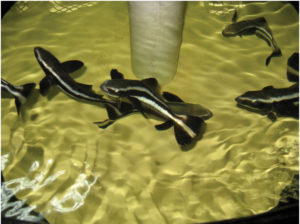
Continued reliance on marine feedstuffs for aquafeed production has been an ongoing issue relative to the continued growth and long-term sustainability of the aquaculture industry. Although aquaculture’s demand for fishmeal continues to grow, the United Nations Food and Agriculture Organization’s 2008 State of World Fisheries and Aquaculture stated: “Given the difficulty in replacing fish oils … it is clear that competition for fish oil is likely to be a more serious obstacle for some sections of the aquaculture industry.”
Fish oil replacement in diets has proven somewhat difficult for salmonids and marine finfish, which collectively consume more than 80 percent of all fish oil used in aquafeeds. Most taxa in these categories have high energy demands, but are relatively intolerant of carbohydrates as sources of dietary energy. Further compounding the problem of higher lipid demand, most of these taxa exhibit dietary requirements for long-chain polyunsaturated fatty acids (LC-PUFAs) arachidonic acid, eicosapentaenoic acid (EPA), and docosahexaenoic acid (DHA), in addition to the essential fatty acids linolenic acid (LNA) and alpha linolenic acid.
Although alternative sources of LC-PUFAs, such as fungal and algal oils and meals, are being developed and increasingly commercialized, at present, fish oil is the most practical source of LC-PUFAs for aquafeeds. As a result, the levels of fish oil used in feeds for marine carnivores remain high. For cobia, for example, typical feed formulations contain 5 to 15 percent lipid, primarily in the form of fish oil.
Through blending with alternative fats and oils, however, it may be possible to meet the high demands of carnivorous marine fish while reducing inclusion rates for fish oil in aquafeeds intended for these taxa.
Fish oil spared with soybean oil
To this end, the authors evaluated the effects of graded substitution of dietary fish oil with soybean oil in feeds for juvenile cobia cultured in a recirculation aquaculture system. The test feeds contained 100, 67, 33 and 0 percent fish oil (Table 1).
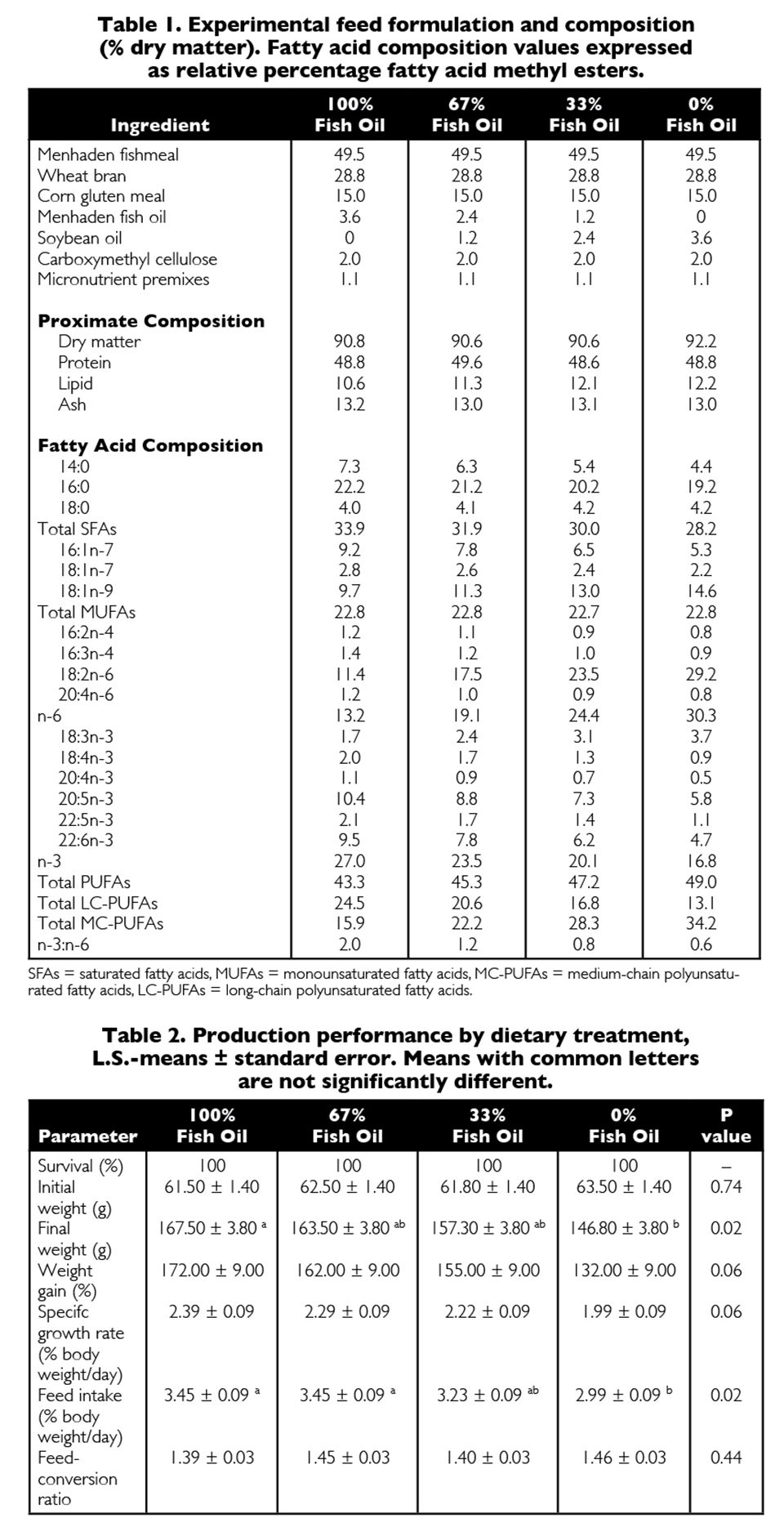
As a marine carnivore exhibiting high growth rates, cobia are considered a species for which fish oil replacement may be difficult. But after six weeks of culture, most production performance criteria were unaffected by fish oil sparing with soybean oil (Table 2). Differences were observed for final individual weight, individual consumption and feed intake, but only the 0 percent fish oil dietary treatment group was statistically distinct from the 100 percent fish oil control group.
The estimated and analyzed compositions of the experimental feeds suggested essential fatty acids deficiency may have been a causal factor in the differential production performance observed. The slight, though significant, reduction in feed intake suggested acceptance of the feed without fish oil might have also been a contributing factor.
Although fish may be able to differentiate between feeds based on lipid content, it is assumed that reduced intake is a consequence of nutritional inadequacy, not palatability per se. This is the most likely explanation of the results.
Although there appeared to be a slight preference for the 100 percent fish oil and 67 percent fish oil feeds from the beginning (suggesting palatability issues), intake and consumption of the 33 percent and 0 percent fish oil feeds continued to decline over time (suggesting progressive dietary utilization issues or deficiency states). Using growth as the most responsive criterion of performance, analysis indicated 1.9 percent EPA and DHA is needed in the diet to maintain growth in juvenile cobia.
Although production performance was relatively robust, cobia fillet fatty acid composition was greatly altered by dietary inclusion of soybean oil. As increasing amounts of fish oil were replaced, soybean oil-associated fatty acids became enriched within the fillet. This was not surprising, given the well-established paradigm of diet as the primary determinant of tissue fatty acid composition in fish.
It appears that cobia are somewhat unique in terms of how they metabolize and traffic certain fatty acids. Specifically, cobia appear to demonstrate preferential inclusion of oleic acid in their fillet lipids across a broad range of dietary concentrations. Conversely, LNA began to be excluded from the fillet lipids at higher dietary concentrations.
In other species, LNA has been shown to “outcompete” other fatty acids for deposition within fillet lipids, whereas oleic acid was only “passively” included at levels mirroring dietary content. These apparent distinctions between cobia and other fish suggest LNA-rich lipids may be more suitable for cobia than originally anticipated, whereas oleic acid-rich lipids may be less useful.
Perspectives
Soybean oil can replace a substantial amount of fish oil in aquafeeds for cobia. Production performance is largely unaffected by partial replacement of fish oil with soybean oil, though tissue fatty acid composition is significantly altered, even at low levels of fish oil substitution. However, juvenile cobia appear to exhibit a dietary requirement for intact LC-PUFA.
Several apparent distinctions in fatty acid metabolism in this species have potential importance for feed formulation and manipulations of tissue composition and quality, and merit further research.
Editor’s Note: This article was derived from a paper by the authors that was recently accepted for publication in Aquaculture Nutrition.
(Editor’s Note: This article was originally published in the July/August 2010 print edition of the Global Aquaculture Advocate.)
Now that you've reached the end of the article ...
… please consider supporting GSA’s mission to advance responsible seafood practices through education, advocacy and third-party assurances. The Advocate aims to document the evolution of responsible seafood practices and share the expansive knowledge of our vast network of contributors.
By becoming a Global Seafood Alliance member, you’re ensuring that all of the pre-competitive work we do through member benefits, resources and events can continue. Individual membership costs just $50 a year.
Not a GSA member? Join us.
Authors
-
Jesse T. Yu, Ph.D.
Fisheries and Illinois Aquaculture Center
Southern Illinois University Carbondale
Carbondale, Illinois 62901 USA[117,100,101,46,117,105,115,64,105,107,115,117,108,97,115]
-
Heidi Lewis
Fisheries and Illinois Aquaculture Center
Southern Illinois University Carbondale
Carbondale, Illinois 62901 USA -
Jérôme Laporte
Fisheries and Illinois Aquaculture Center
Southern Illinois University Carbondale
Carbondale, Illinois 62901 USA -
Michael Schwarz, Ph.D.
Virginia Seafood Agricultural Research and Extension Center
Hampton, Virginia, USA -
Brendan C. Delbos, M.S.
Virginia Seafood Agricultural Research and Extension Center
Hampton, Virginia, USA -
Ricardo Takeuchi
International Initiative for Sustainable and Biosecure Aquafarming
Norfolk, Virginia, USA -
Luís A. Sampaio, Ph.D.
Marine Fish Culture Laboratory
Institute of Oceanography
Federal University of Rio Grande
Tagged With
Related Posts
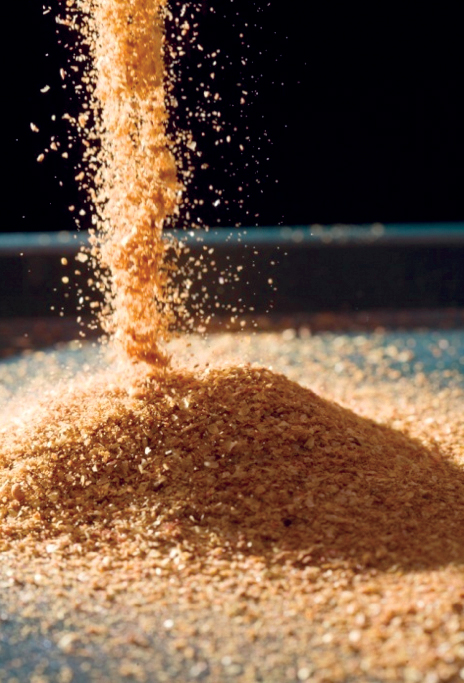
Aquafeeds
A look at corn distillers dried grains with solubles
Corn distillers dried grains with solubles are an economical source of energy, protein and digestible phosphorus to reduce feed costs and fishmeal usage.
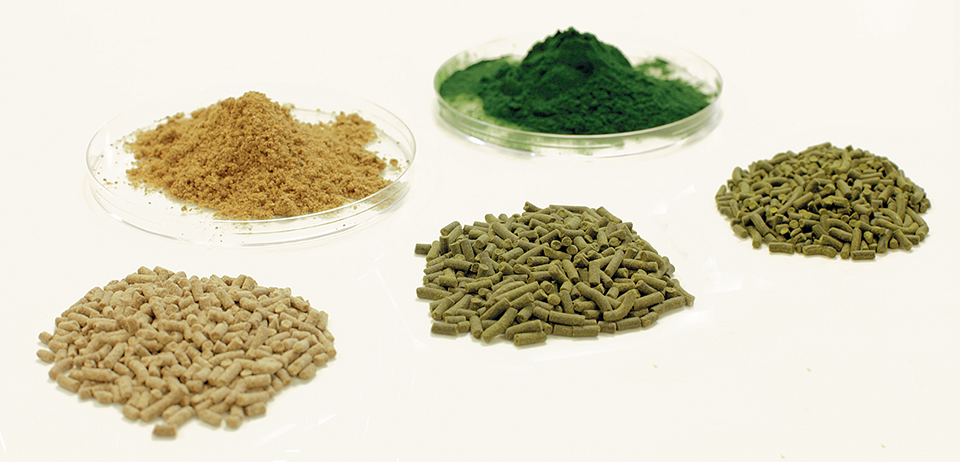
Aquafeeds
Algae alternative: Chlorella studied as protein source in tilapia feeds
Chlorella and other species have potential as protein sources in aquafeeds. In trials with tilapia fry raised in a recirculating system, the fish received a fishmeal-based control diet or feeds with portions of the fishmeal replaced by Chlorella.
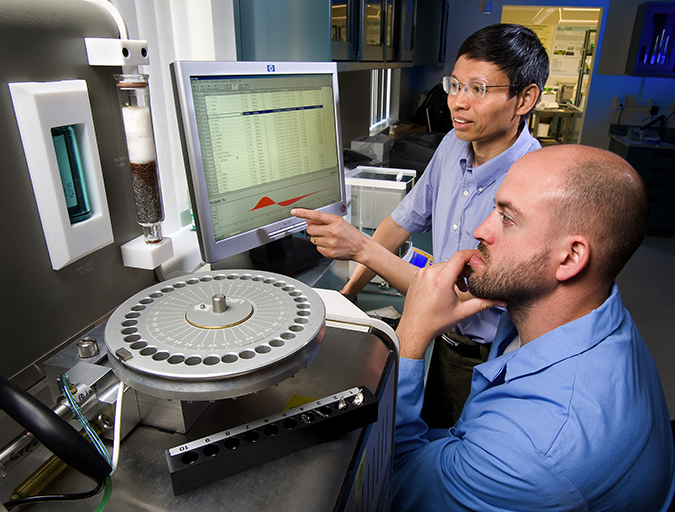
Aquafeeds
Alternative feed ingredient universe to convene at F3 meeting
What started out as a simple yet ambitious contest to drive innovation in the aquafeed sector has evolved into a fully global competition – and collaboration – amongst ingredient suppliers and feed manufacturers.
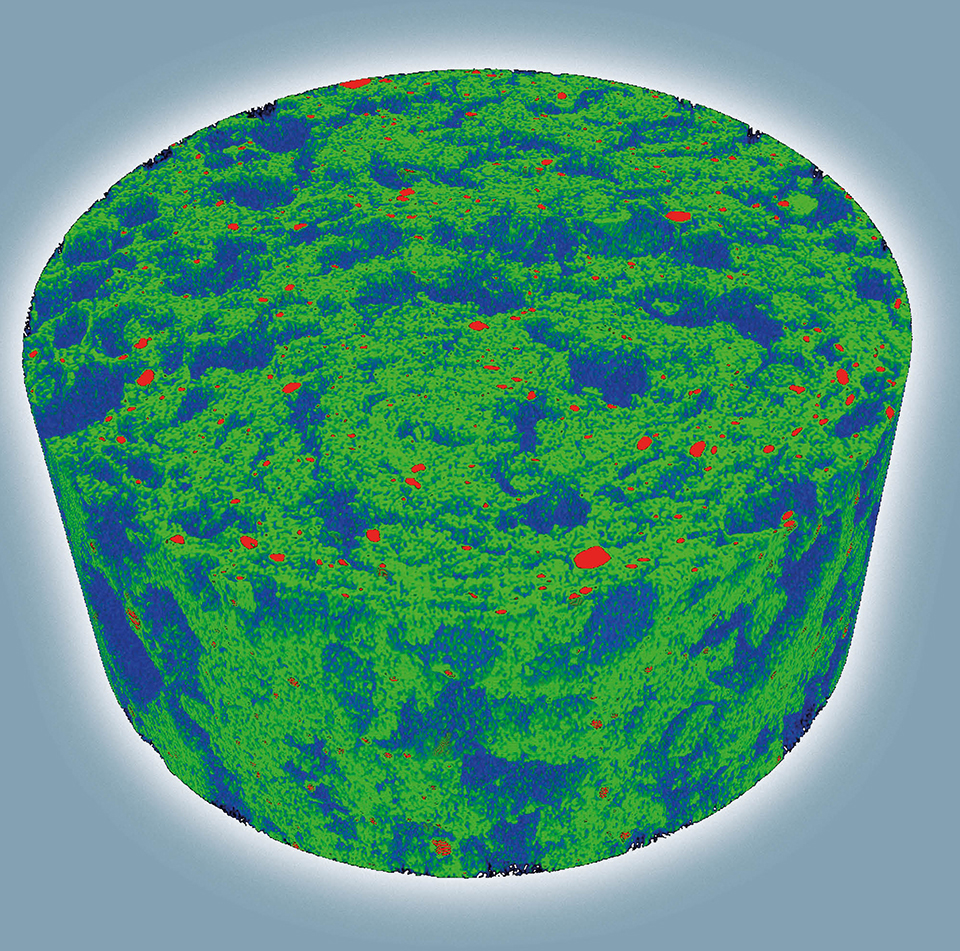
Aquafeeds
Alternative feed ingredients support continued aquaculture expansion
Identifying sources for essential macro- and micronutrients is important, as well as understanding how best to manufacture feed to required physical specifications when using these new raw materials.


